The battle for Donbas: Why the weapons the US is rushing to Ukraine are so critical
Russia hopes to surround and destroy Ukrainian forces in Donbas, officials say.
As Russia's military gears up for what it hopes will be a decisive victory over Ukraine in the eastern part of the country, the U.S. is rushing to send weapons and equipment needed to hold off the larger invading force in the rural and open Donbas terrain -- a far different battlefield from the urban fighting where Ukrainian forces held an advantage.
What could make all the difference now is the new $800 million military aid package for Ukraine President Joe Biden announced Thursday.
It's a race against time -- maybe a matter of weeks, a U.S. defense official said.
"Now they've launched and refocused their campaign to seize new territory in eastern Ukraine, and we're in a critical window now of time where they're going to set the stage for the next phase of this war," Biden said of the Russian offensive, which U.S. military officials believe is just getting started.
"We know that time is not our friend," Pentagon press secretary John Kirby told reporters Tuesday.
Russia gains by being closer to its border
With Ukrainian forces focused in the east, Russia intends to push down from the north, near the city of Izium, and up from the south, surrounding the Ukrainian defenders to "finish them or force them to surrender," a senior U.S. official said Thursday.
If Russia takes the beleaguered city of Mariupol in the south, it could free up thousands of troops to join the push north to trap Ukraine forces, according to the official.
Although Russia and Ukraine have been battling over Donbas for eight years, Russia's concentrated flow of troops and weapons into the region could bring "a whole different level of fighting," Kirby said Tuesday.
There are now 85 battalion tactical groups (BTGs), Russia's main fighting units, inside Ukraine, according to the official. Each BTG is made up of roughly 800-1,000 troops. About 10 of them crossed into the country this week, most heading to the Donbas region.
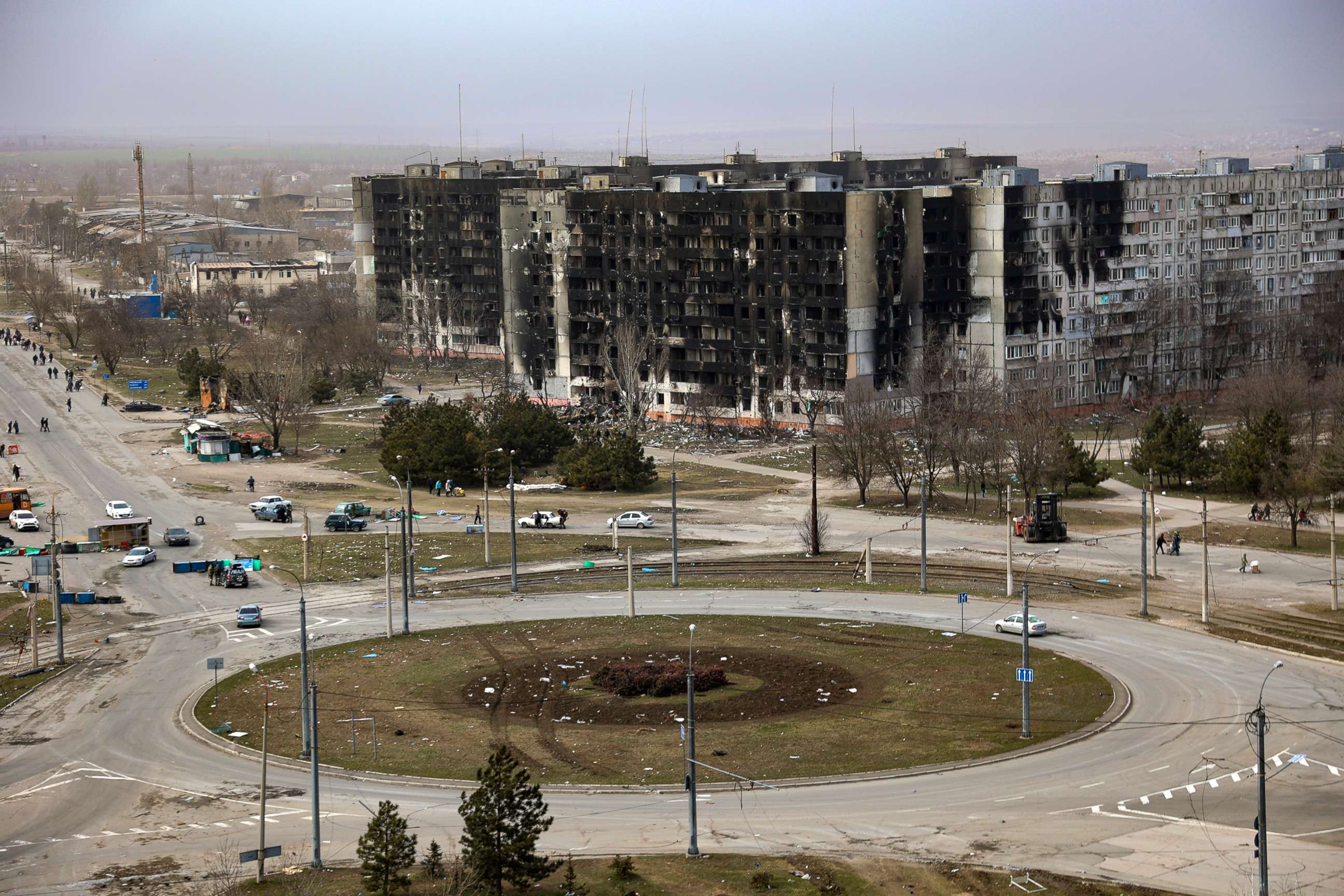
Kirby said the U.S. is focused on sending Ukraine weapons and systems that are not only useful for the rural eastern terrain, but that the Ukrainians can use in the fight without much training.
Russia, meanwhile, is trying not to repeat blunders it committed in northern Ukraine, and will enjoy certain geographic advantages in Donbas.
Early on, Russian invaders in the north were beset by supply problems, running out of food for troops and fuel for vehicles, failing to achieve any major victories. Pentagon officials believe they did not expect such strong resistance from Ukrainians so didn't adequately prepare for a prolonged fight.
But since withdrawing its troops in the north to focus on Donbas, Russia has been putting equipment and support forces in place ahead of its combat troops to favorably condition the battlefield.
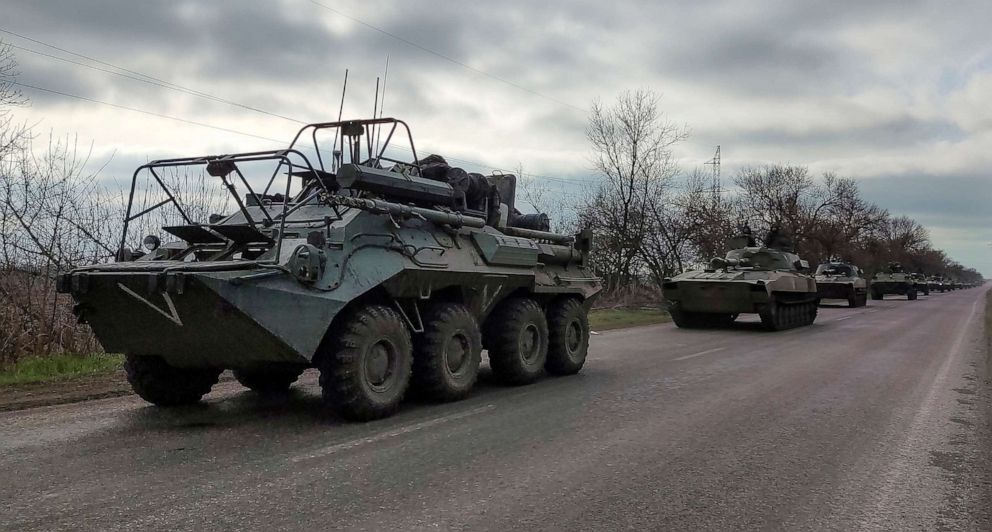
"We believe that they are trying to learn from past mistakes, and you can see that in just the way they are conducting these shaping operations," Kirby told reporters Monday. "They're conducting themselves in ways that we didn't see around Kyiv, for instance."
Another advantage for Russia is that its logistics will be simplified by fighting closer to its own border, while Ukraine will now face the challenge of transporting heavy weapons and ammunition coming over its western border all the way across the country, meaning more miles for something to go wrong, and more chances for Russia to strike these vital shipments.
How US-provided artillery and radars could make a difference
To stand a chance fighting in the open Donbas landscape, Ukraine will need more long-range weapons and the ability to quickly move troops on the ground and in the air, according to Mick Mulroy, former deputy assistant secretary of defense for the Middle East and ABC News contributor.
The U.S. has sent Ukraine $3.4 billion of aid since the beginning of the invasion, including many thousands of shoulder-fired missiles, small arms and ammunition, body armor, and medical supplies. The two most recent packages, dedicating $800 million of aid each, announced April 13 and 21, were tailored to reflect the new battle space.
"It's different," Biden said Thursday. "It’s flat, it's not in the mountains, and it requires different kinds of weapons to be more effective."
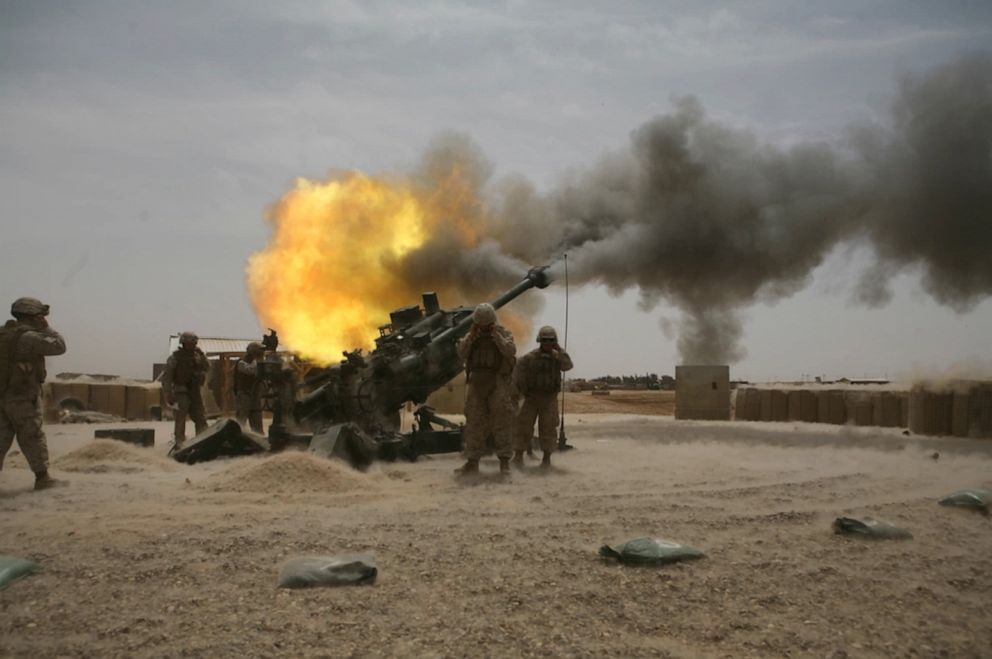
To that end, the U.S. is sending 90 of its 155mm howitzers, which officials say will begin arriving over the weekend.
"This is going to be the king of battle out there," Mulroy said.
While Ukraine already has Russian-made artillery pieces, the U.S. and most Western nations do not have the corresponding 152mm ammunition to offer as it runs through its limited stockpiles. The incoming U.S.-made 155mm guns will bring Ukrainian forces extra firepower, but also the ability to be better resupplied by the West.
To start, the U.S. is sending 184,000 artillery rounds along with the 90 weapons.
Russia has been flowing its own artillery into Donbas in preparation for its renewed offensive. To help Ukraine counter the threat, the U.S. is sending 14 radar systems that can detect incoming artillery and other indirect-fire attacks and find where they're coming from.
"Right now the Russians are kind of just lobbing artillery without any consequence," Mulroy said. "They want to give them a whole lot of consequence."
The radar systems can help the Ukrainians accurately fire back.
"The counter radar is moving to theater this week," a senior U.S. defense official said Thursday, adding that the howitzers and radar systems complement each other, but can also be used independently.
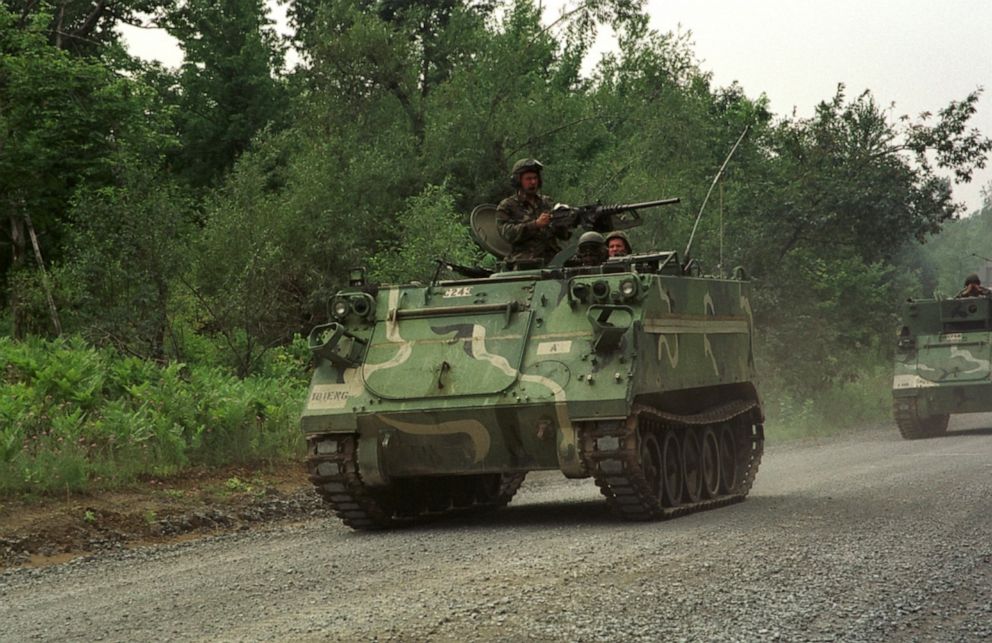
Training will be critical
About 50 Ukrainians are being trained on the U.S. howitzers outside of the country. This first group of trainees is expected to finish around the same time as the first artillery pieces arrive in their country, likely Sunday or Monday, according to a U.S. official. The U.S. is using a "train-the-trainer" approach so as not to pull too many high-demand troops away from the front -- the small group of Ukrainians learning to use the new systems will return to their country to train fellow Ukrainian troops there.
The U.S. took a similar approach with the small, explosive Switchblade drones, hundreds of which are headed to Ukraine.
A small number of Ukrainians were in the U.S. for pre-scheduled military education when Russia invaded their country. The U.S. capitalized on their presence to add a couple days of training on the Switchblades, which are designed to fly directly into targets and explode.
"Although it's not a very difficult system to operate, we took advantage of having them in the country to give them some rudimentary training on that," a U.S. defense official said on April 6.
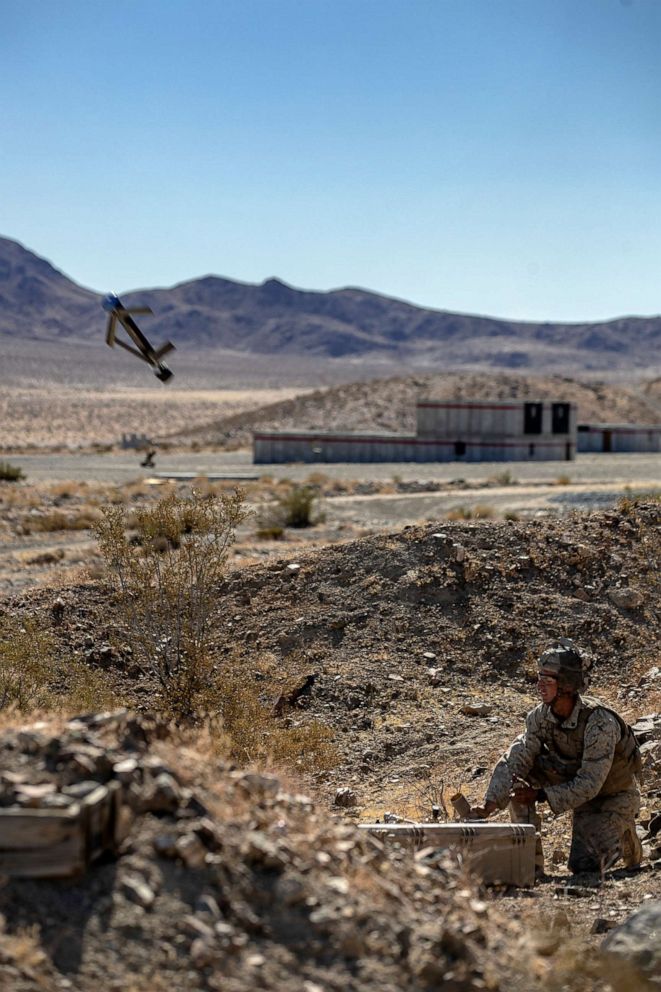
U.S. officials have said other systems being sent to Ukraine will also require a small period of training, likely to also take place outside of the country. Officials have declined to specify where such training could take place, citing operational security concerns.
With Russia intent on surrounding and trapping Ukrainian forces, the ability to move troops quickly by ground and air will be essential, according to Mulroy.
"They're going to try to envelope the Ukrainians and cut them off and starve them," he said. "So, the Ukrainians need to have the ability not to let that happen."
Since the beginning of the invasion, the U.S. has given Ukraine 16 Mi-17 transport helicopters, each able to carry a three-person crew and up to 30 passengers.
Mulroy said an advantage of the Soviet-designed Mi-17 is that Ukrainian pilots already know how to fly them.
The U.S. has also offered Ukraine hundreds of armored personnel carriers that have tracks similar to those of tanks, as well as armored Humvees.
Weather will likely play a factor, and muddy conditions during Spring could limit vehicle mobility for both sides.
"Even just this week, the ground as it is makes it harder for them to operate off of paved roads and highways," Kirby said.
Time is of the essence
Mulroy said the U.S. is doing a great job shipping military aid to the region, but believes more can be done to speed things up.
"We just have to take every opportunity to increase production and improve the flow, because it is going to make a difference," he said.
The U.S. has not sent Ukraine any of its M1 Abrams tanks, officials saying they are too different from Ukraine's T-72s to be useable in the short term. But other nations with the Soviet-era tanks have given theirs.
In total, Ukrainian forces have more tanks in their country than Russia's military, a senior U.S. defense official said Thursday.
A less tangible but very real factor in the fighting so far has been troop morale.
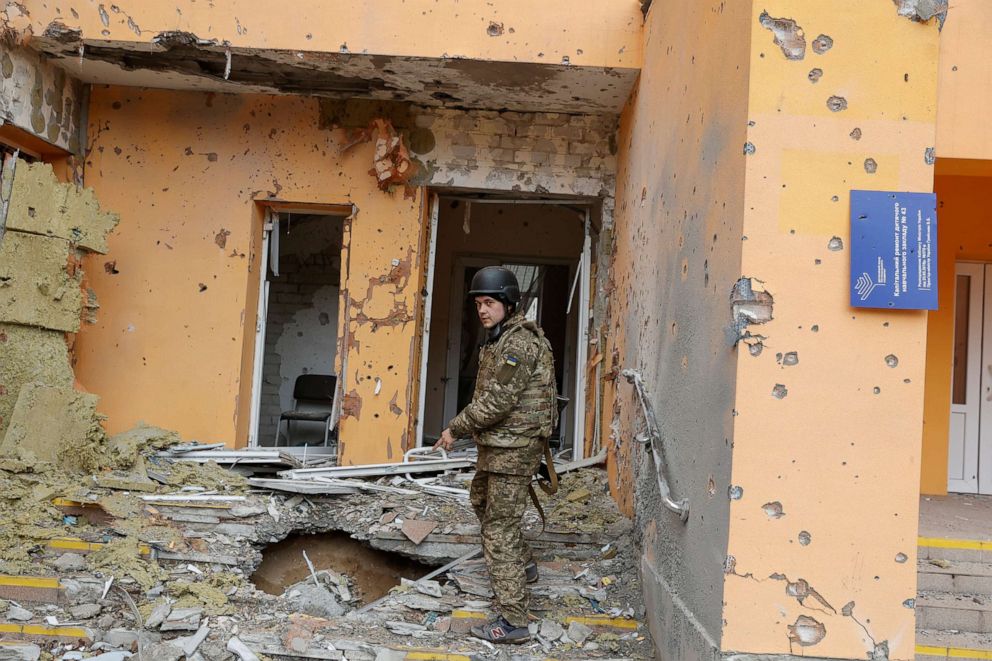
The Pentagon sees evidence Russian forces are still suffering from low motivation and poor unit cohesion, according to officials.
"Almost half of their enlisted troops are conscripts who don't receive a lot of training and who we have evidence, even recent evidence, that they've been disillusioned by this war," the senior U.S. defense official said. Meanwhile Russian officers are frustrated with the performance of other officers and of their own troops, according to the official.
Ukrainian troops have not seemed to suffer any significant morale problems, and throughout the war have been described by U.S. officials as brave and wily in defense of their homeland.
Biden praised the resolve of Ukrainians in a meeting with top military leaders at the White House Wednesday.
"I knew they were tough and proud, but I tell you what, they're tougher and more proud than I thought," Biden said.









